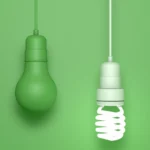In the dynamic landscape of renewable energy, hydroelectric power emerges as a stalwart, utilizing the immense force of flowing water to generate electricity. This article explores the multifaceted realm of hydroelectric power, unraveling its historical roots, technological intricacies, environmental impacts, and its pivotal role in the global pursuit of sustainable energy solutions.
The Evolution and Historical Roots of Hydroelectric Power
Hydroelectric power, with its roots traced back to ancient water mills, has evolved into a sophisticated and indispensable source of electricity. Harnessing water’s kinetic energy for mechanical power has been a cornerstone of human innovation. From the water wheels of antiquity to the colossal hydroelectric dams of the modern era, the trajectory of hydroelectric power exemplifies the continuous quest to leverage nature’s forces for human benefit.
Early Water Mills and the Industrial Revolution
The earliest instances of hydroelectric power can be glimpsed in ancient water mills, where flowing water turned wheels to grind grain or perform other mechanical tasks. However, it was during the Industrial Revolution that hydroelectric power underwent significant advancements. Water wheels evolved into turbines, driving machinery and revolutionizing industries. This historical evolution laid the groundwork for today’s large-scale hydroelectric power plants.
The Rise of Hydroelectric Dams in the 20th Century
In the 20th Century, we have witnessed a surge in hydroelectric power development, marked by the construction of massive dams across the globe. These engineering marvels, such as the Hoover Dam in the United States and the Three Gorges Dam in China, symbolize the monumental scale at which hydroelectric power has been harnessed. The construction of these dams not only generated electricity on an unprecedented scale but also brought forth economic development and water resource management.
Technological Intricacies of Hydroelectric Power Generation
A sophisticated interplay of engineering and technology is at the heart of hydroelectric power generation. The process involves converting the kinetic energy of flowing water into electrical energy through turbines, generators, and an intricate infrastructure network. Understanding these technological intricacies is crucial for appreciating the efficiency and sustainability of hydroelectric power.
Turbines and Generation Units
Hydroelectric power plants employ turbines as the central component for energy conversion. As water flows through the turbines, it causes them to rotate, converting the kinetic energy into mechanical energy. Connected to generators, these turbines transform mechanical energy into electrical energy, which is then transmitted for distribution. The efficiency of these turbines and generation units is paramount in optimizing the electricity output of hydroelectric power plants.
Dam Infrastructure and Reservoir Management
Dams play a pivotal role in hydroelectric power generation by creating reservoirs that store large volumes of water. The controlled release of this water through the turbines allows for consistent energy production. Additionally, dams are essential for water resource management, regulating downstream water flow, preventing floods, and providing water for agricultural and municipal use. The intricate engineering of dam infrastructure contributes to hydroelectric power’s overall efficiency and sustainability.
Environmental Impacts and Sustainability Considerations
While hydroelectric power is celebrated for its renewable nature, it is not without environmental implications. The construction of dams, alteration of river ecosystems, and the potential for greenhouse gas emissions from reservoirs raise critical sustainability considerations. Balancing the benefits of clean energy with environmental impacts is essential for responsible hydroelectric power development.
Alteration of River Ecosystems and Aquatic Habitats
The construction of dams can significantly alter river ecosystems and impact aquatic habitats. Changes in water flow, sediment transport, and temperature variations can disrupt the natural balance of aquatic environments. Responsible hydroelectric development involves thorough environmental impact assessments and mitigation strategies to minimize harm to fish populations, aquatic flora, and the overall biodiversity of river ecosystems.
Greenhouse Gas Emissions from Reservoirs
While hydroelectric power is considered a low-emission energy source, the creation of reservoirs can lead to the release of greenhouse gases. Decomposing organic matter in submerged areas produces methane, a potent greenhouse gas. Sustainable hydroelectric power practices involve monitoring and mitigating these emissions, including controlled reservoir drawdowns and vegetation management to minimize environmental impact.
Global Significance and Role in Sustainable Energy
Hydroelectric power’s global significance lies in its substantial contribution to the world’s electricity supply and its role in mitigating climate change. As nations strive to transition to sustainable energy sources, hydroelectric power is a reliable and efficient ally in reducing reliance on fossil fuels and curbing greenhouse gas emissions.
Global Electricity Generation and Energy Security
Hydroelectric power accounts for a significant portion of the world’s electricity generation. Its reliability as a baseload power source contributes to energy security by providing a stable and consistent electricity supply. Nations with abundant water resources often leverage hydroelectric power to diversify their energy mix, enhancing resilience against fluctuations in fossil fuel prices and supply disruptions.
Carbon Mitigation and Climate Change Resilience
Hydroelectric power is crucial in mitigating carbon emissions and addressing climate change. As a clean energy source, it displaces the need for electricity generated from fossil fuels, reducing the overall carbon footprint of the energy sector. Hydroelectric reservoirs act as carbon sinks, capturing and storing carbon dioxide from the atmosphere, further contributing to climate change resilience.
Future Prospects and Innovations in Hydroelectric Power
The future of hydroelectric power is marked by ongoing innovations and technological advancements aimed at addressing environmental concerns, improving efficiency, and expanding the potential for harnessing water’s energy. These advancements pave the way for hydroelectric power’s sustainable and resilient future.
Run-of-River and Small-Scale Hydroelectric Projects
Innovations in hydroelectric power include the development of run-of-river and small-scale projects that minimize environmental impacts. Unlike traditional dams, run-of-river projects divert a portion of river flow without creating large reservoirs, preserving natural waterways and ecosystems. Small-scale hydroelectric projects cater to local energy needs, providing a decentralized approach to clean energy generation.
Pumped Storage and Energy Storage Integration
Pumped storage represents a breakthrough in energy storage integration with hydroelectric power. During periods of low electricity demand, surplus energy is used to pump water into elevated reservoirs. When demand is high, the stored water is released to generate electricity. This innovative approach enhances hydroelectric power’s overall efficiency and flexibility, transforming it into a reliable energy storage solution.
Conclusion
Hydroelectric power, with its rich historical roots and technological intricacies, is a cornerstone in the global pursuit of sustainable and clean energy. At the same time, environmental considerations necessitate responsible development practices, and the potential for innovation and advancements in hydroelectric power positions it as a resilient and indispensable contributor to the world’s energy mix. As nations navigate the complexities of energy transitions, hydroelectric power remains a beacon, harnessing nature’s power to illuminate a path toward a greener and more sustainable future.










